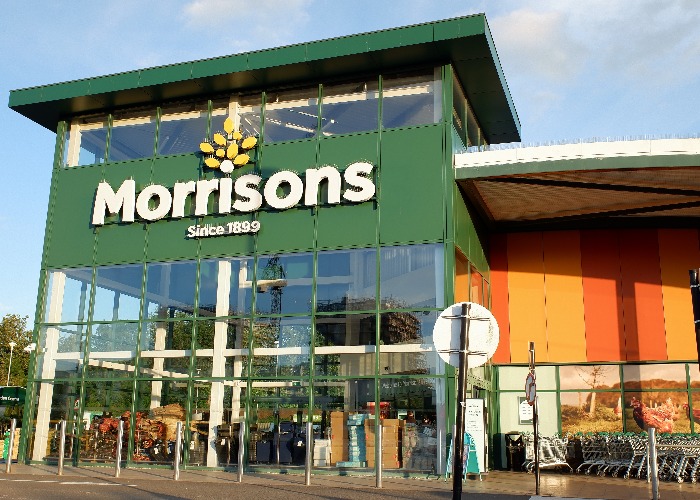Save at the supermarket: Morrisons cuts prices on 100+ products including bread and beer

Supermarkets continue to trumpet price reductions in bid to win shoppers’ custom in midst of cost of living crisis.
Morrisons has announced it is slashing the price of over 170 products in the latest salvo of the supermarket price war.
The products, which are both branded and non-branded, are dropping in price by up to 15%. Items included in the latest price cuts include bread, sausages, chips and beer.
For example, a four pack of Peroni is dropping from £6.50 to £6, while Hovis Granary medium is falling to £1.85 from £2.15. Morrisons The Best Cumberland Sausages is falling in price from £2.50 to £2.39.
The price cuts will be locked in for at least eight weeks, so you can be confident they won’t suddenly escalate in price.
Why supermarkets are regularly announcing price cuts
The cost of living crisis has prompted a real battle among the nation’s supermarkets, as they scrap to try to retain the custom of households whose finances are stretched and so are looking for ways to reduce their outgoings on food.
That is demonstrated pretty clearly by the fact that this latest swathe of price cuts from Morrisons is the seventh time it has announced some sort of price reduction this year alone.
It’s been a common feature of supermarkets of all sizes, in fact. Every couple of weeks there will be the announcement of some sort of new money-saving batch of cuts.
The start of July for example saw Ocado cut prices, to the point it became the cheapest option for milk, while Sainsbury’s announced it was spending £15 million on its own raft of price changes.
The message is usually the same ‒ the supermarket recognises that things are tough for households across the country, and in order to support shoppers it has dropped the prices on essential products.
The hope is obviously that if we can save a few quid with our regular supermarket, we won’t look elsewhere, while those hoping to cut their supermarket spending will be tempted into giving that particular outlet a try.
Turning the corner
There is also optimism that food price inflation has at least peaked. Earlier this year it hit a rate of 19.1%, which is frankly absurd. That’s the highest food price inflation seen in 45 years.
Thankfully the rate seems to have dropped somewhat since then, according to the Office for National Statistics (ONS), which has also been tracking our attitude to food costs.
Its surveys found that almost half of us were now buying less food when heading to the supermarket than previously, in most cases due to rising costs.
Almost everyone pointed to their supermarket shopping as a contributor to their cost of living going up.
Politicians have pointed the finger at the supermarkets themselves, in some cases accusing them of profiteering, though the Government has resisted calls for some level of price cap on our food.
It’s worth remembering that even if food price inflation is slowing, that doesn’t mean our costs are falling ‒ it simply means that the rate at which food prices increase is slowing.
What will I pay?
Given that so many supermarkets have announced various price cuts this year, where is your money likely to go furthest?
The consumer champions at Which? carry out a monthly survey, monitoring how much a typical basket of goods would set you back at each of the main names.
Here’s how they shaped up in June, for a basket of 42 standard items:
|
Supermarket |
Average basket cost |
|
Aldi |
£75.25 |
|
Lidl |
£77.18 |
|
Asda |
£82.55 |
|
Tesco |
£82.67 |
|
Sainsbury’s |
£83.46 |
|
Morrisons |
£85.98 |
|
Ocado |
£89.20 |
|
Waitrose |
£91.80 |
As you can see, there’s a significant difference between the cheapest and costliest options here.
Indeed, even compared with Asda ‒ which has traditionally had something of a budget-friendly reputation ‒ the deep discounters of Aldi and Lidl are noticeably cheaper.
That sort of saving can really add up over a year, and it’s clear that shoppers are realising that switching supermarket could help them stretch their budgets further.
Data from Kantar World Panel shows that since Christmas Aldi’s market share has grown from 9.1% to 10.2%, while Lidl’s has moved from 7.2% to 7.7%.
By contrast, the big names ‒ Tesco, Sainsbury’s, Asda, Morrisons and Waitrose ‒ have all seen their market share drop.
Comments
Be the first to comment
Do you want to comment on this article? You need to be signed in for this feature